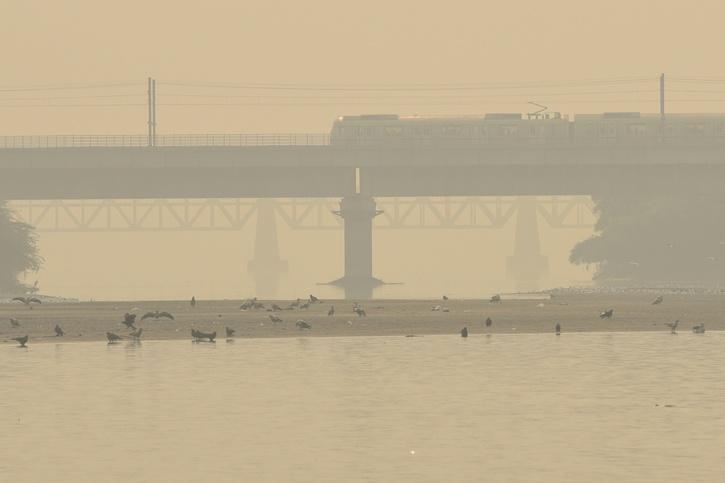
Highlights
- The air quality in Anand Vihar was recorded in the “severe” category throughout Friday.
- On Saturday morning too, Anand Vihar remained the most polluted part of Delhi with an AQI of 454.
- Monitoring stations at Wazirpur (439), Narela (423), Ashok Vihar (428), Vivek Vihar (427) and Jahangirpuri (438) also recorded “severe” air quality on Saturday morning.
As winter sets in, and the wind speeds reduce the air quality of the national capital and adjoining areas, pollution levels are taking a turn for the worse.
On Friday for the first time this season, the air quality dropped below the 400-mark.
The air quality in Anand Vihar was recorded in the “severe” category throughout Friday.

Anand Vihar remains the most polluted
An AQI between zero and 50 is considered “good”, 51 and 100 “satisfactory”, 101 and 200 “moderate”, 201 and 300 “poor”, 301 and 400 “very poor”, and 401 and 500 “severe”.
The ‘severe’ category affects healthy people and seriously impacts those with existing diseases, according to the CPCB.
On Saturday morning too, Anand Vihar remained the most polluted part of Delhi with an AQI of 454.
AQI across Delhi-NCR close to severe
Monitoring stations at Wazirpur (439), Narela (423), Ashok Vihar (428), Vivek Vihar (427) and Jahangirpuri (438) also recorded “severe” air quality on Saturday morning.
The overall Air Quality Index (AQI) of Delhi stood at 396 at 10 am, worsening from 357 at 4 pm on Friday. It was 354 on Thursday, 271 on Wednesday, 302 on Tuesday and 312 on Monday.
The air quality in the neighbouring cities of Ghaziabad (381), Noida (392), Greater Noida (398), Gurugram (360) and Faridabad (391) also inched closer to the “severe” category.

Just days after the ‘cleanest’ Diwali
According to the Central Pollution Control Board (CPCB), the concentration of lung-damaging fine particles known as PM2.5 was above 400 micrograms per cubic metre at 10 am, around seven times the safe limit of 60 micrograms per cubic metre, in many areas.
The air quality in Delhi-NCR dropped to severe in many parts just days after marking the ‘cleanest’ Diwali in many years.
A combination of factors including the restrictions on the production, sale and use of firecrackers and favourable climatic conditions aided by Cyclone Sitrang meant the AQI on Tuesday morning was 303, compared to 462 last year on November 5, a day after Diwali.
AQI to drop further
With the onset of winter, when the climatic conditions become unfavourable and the wind speeds reduce, the air quality in Delhi-NCR is likely to worsen further.

In cold conditions, pollutants are trapped close to the ground because of low mixing height — the vertical height at which pollutants are suspended in the air.
Share of stubble burning to increase
SAFAR, a forecasting agency under the Union Ministry of Earth Sciences, predicted that the share of stubble burning in Delhi’s pollution is likely to increase in the coming days.
The contribution of stubble burning to Delhi’s PM2.5 pollution has so far remained low (up to 7 per cent) due to a prolonged rain spell in early October and slow transport-level winds which were not strong enough to carry smoke from farm fires to the national capital.

The Indian Agricultural Research Institute (IARI) reported 2,067 farm fires in Punjab on Friday, the highest so far this season. It logged 124 and 34 cases of stubble burning in Haryana and Uttar Pradesh, respectively, on Friday.

